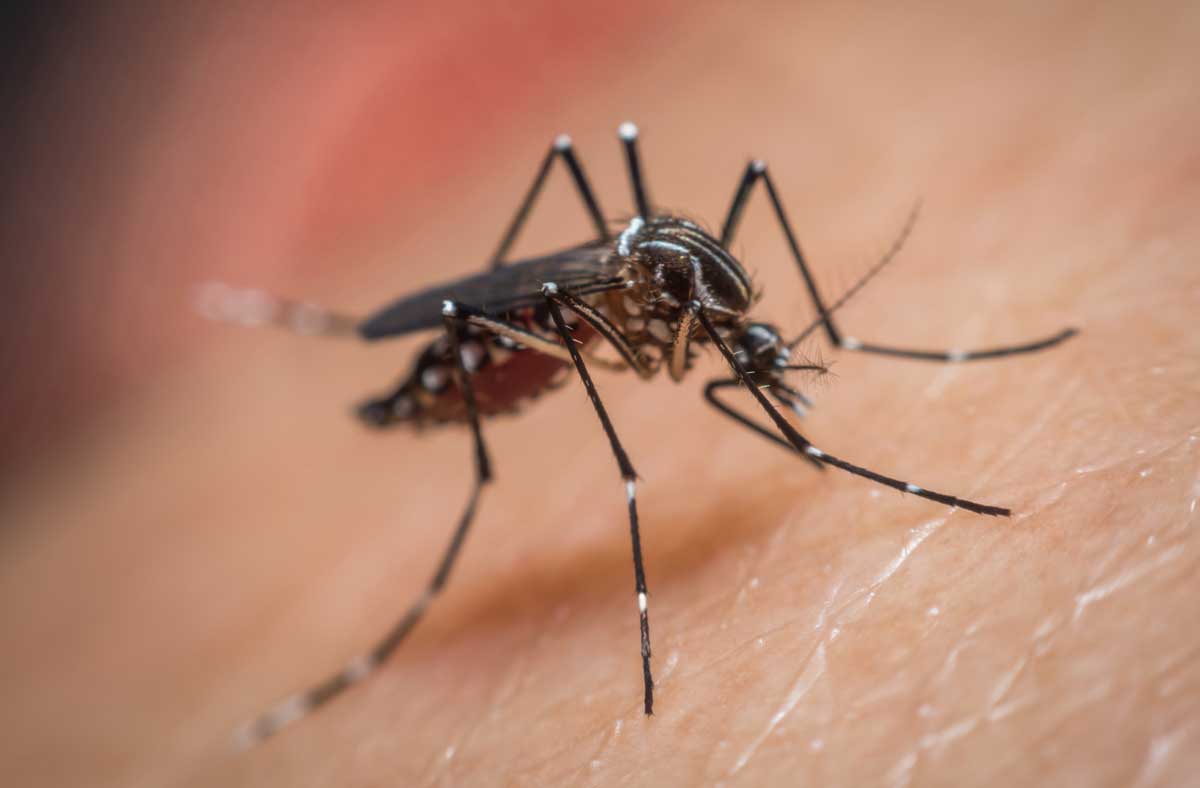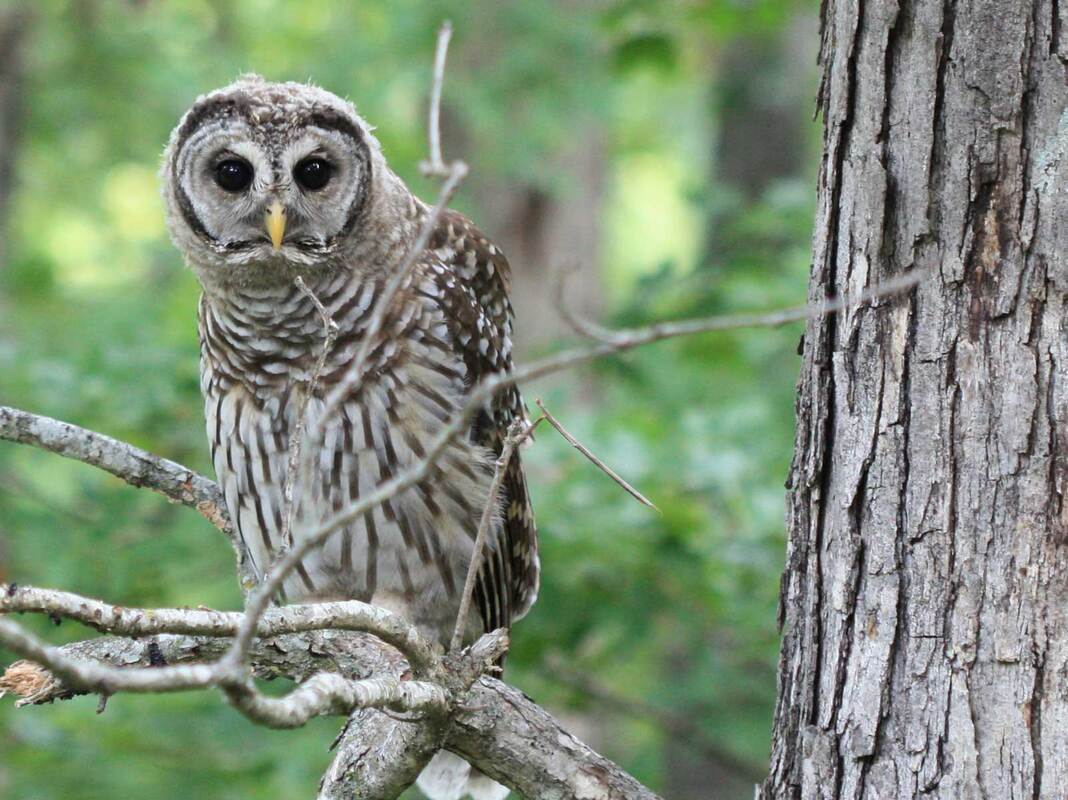|
You know what I’m talking about. Mosquitoes don’t mess around with buzzing your toes, or your buttocks, because that would not be nearly as annoying. A female mosquito beats her wings at about 500 flaps per second. That’s a lot of hard work. She doesn’t want to waste all that hard work unless she can really annoy you and make you slap your own face in your attempts to make the buzzing go away.
Well, as it turns out, there is more to the story than sheer pugnaciousness. You see, female mosquitoes need to drink blood. One good way to find blood is to follow the scent of carbon dioxide. Warm-blooded creatures happen to breathe out a lot of carbon dioxide, and we all know that warm blood is the tastiest blood, right? So, female mosquitoes zero in on the scent of CO2. That brings them close to our heads (because we don’t breathe carbon dioxide out our butts… that’s mainly hydrogen, methane, and hydrogen sulfide… the stuff that makes our farts smelly). Once the female mosquito is in the vicinity of your face, she then begins to smell something else that gets her tiny little heart pounding with excitement—the odor of ear wax. Ear wax emits a smell that mosquitoes love. Thus, I have finally solved the mystery, but this doesn’t really prevent me from slapping my own face to get rid of the annoying sound.
0 Comments
We have a juvenile barred owl that is making itself at home in the vicinity of our deck. This youngster is still making the funny whistling call that juvenile barred owls make to contact their parents, probably when they want to be fed. This bird is obviously trying to learn to hunt. It sits in the trees next to our deck and stares at the birds and squirrels that come to our feeders. We haven't seen it try to catch one yet, but I hope to witness that soon (Trish told me to say only if it's one of those darn squirrels). I think it's trying to work up the nerve to dive at one of them.
If you aren't sure you have barred owls in your area, maybe you've heard their calls (which I love hearing). The adults have a distinctive baritone call that sounds like they are saying, "Who cooks, who cooks for youuuuuu?" Below is a photo of our squirrel watcher. Notice it still has a bit of downy fuzz around the head. Maybe a better question is… why does my younger brother’s hair NOT turn gray as he gets older?
My first thought was that this is the universe’s way of letting everybody know that I am no longer a salubrious young man. After all, people need to know not to ask me to help them carry a couch up to their third-floor apartment. Another thought I had was that my life is full of stress. I’ve heard stress causes hair to turn gray. Maybe I’m kind of like Barack Obama—his hair turned gray during his presidency. But actually, my life is pretty cushy and undemanding, so that can't be it. As it turns out, human hair does not really turn gray due to stress. And in reality, hair doesn’t turn gray at all. Once a hair follicle produces hair, the color is set, and it never changes. Well, unless you color your hair, of course. However, as we get older, our hair follicles produce less color. So, as our hair goes through its natural cycle of dying (dying, as in dead, not dyeing as in coloring) and being replaced with new hairs, the new hairs are more likely to grow in gray, at least after we turn 35 or so. So, why doesn’t my brother have gray hair like mine? Because we are two different people, with different genetics. Yes, we share 50% of our genes, but that leaves plenty of room for variation, and his genetic makeup happens to delay his new hairs growing in gray until much later. Unfortunately for him, people will be asking him to help carry couches up flights of stairs for many years to come. One more post in the category of animals that like to get high or drunk.
Did you know rough-toothed dolphins might enjoy getting intoxicated from pufferfish toxin? By the way, compared to the more common bottlenose dolphin, the rough-toothed dolphin has more white markings on its beak and sides. This intoxication behavior was observed for the first time in 1995 by marine biologist Lisa Steiner. She was observing a group of about 60 dolphins. They appeared to be feeding, but they were acting strange. They didn't seem to have much energy. A few of them were feeding lazily, but most were just swimming around—slowly. Then Steiner saw four inflated pufferfish among the dolphins. In fact, the dolphins were pushing the pufferfish around with their beaks. Since then, this behavior has been observed by other biologists. You may know that pufferfish produce a dangerous toxin. This toxin, called tetrodotoxin, is actually one of the deadliest compounds known to science. It is 120,000 times more deadly than cocaine, and is hundreds of times more deadly than the venom of a black mamba or a black widow spider. In small sublethal doses, such as what a dolphin might get from gently pushing an inflated pufferfish, the toxin induces numbness, similar to what was observed in the dolphins. Now, I need to make it clear that some biologists do not believe the dolphins are doing this on purpose (or should I say, on porpoise? haha). Dolphins are curious animals, and they may like to play with or explore pufferfish. After all, an inflated pufferfish is a pretty strange sight to see. The dolphins may unintentionally dose themselves with the toxin during the process of investigating these weird, balloon-like fish. Continuing with the theme of animals that like to get high or drunk.
Did you know cats are irresistibly drawn to the plant Nepeta cataria? Of course, I'm talking about catnip. This one might seem obvious, but perhaps you don't know the whole story. This plant also affects many wild cats, including lions and tigers, though the effects haven't been widely studied in wild cats. Catnip, a plant in the mint family, is native to Europe, Asia, and Africa, and was brought to North America (and other places) by settlers. Now it grows in many areas around the world as a weed and in people's herb gardens. Catnip contains an oil called nepetalactone, which enters a cat's nasal tissues and stimulate's the sensory neurons. These cells then send messages to neurons in the olfactory bulb, which then sends signals to two areas of the brain, the amygdala and hypothalamus. The amygdala helps control the cat's behaviors, and the hypothalamus stimulates a sexual response in the cat. Basically, this causes the cat to display behaviors of a female in heat (even if the cat is male). The cat will rub its head on the plant, roll around on the ground, make sexy cat sounds, and salivate. This lasts for about ten minutes, then the cat becomes immune to the effects for about thirty minutes, after which it may start all over if the cat still has access to the plant. Interestingly, this response is genetic, and it happens to only about 75% of cats. It is not thought to be dangerous to the cat and is not addictive. Well, perhaps it's not physically addictive, but cats are repeatedly attracted to catnip, and they seem to enjoy the effect. By the way... don't bother trying. Catnip does not affect humans. |
Stan's Cogitations
Everyone needs a creative outlet. That's why I write. Archives
July 2024
|






 RSS Feed
RSS Feed